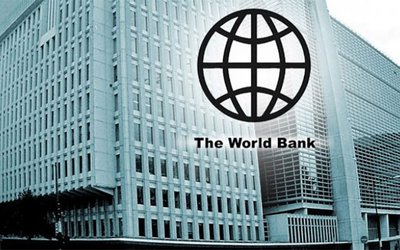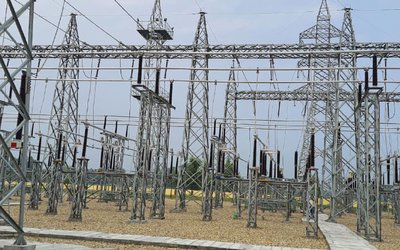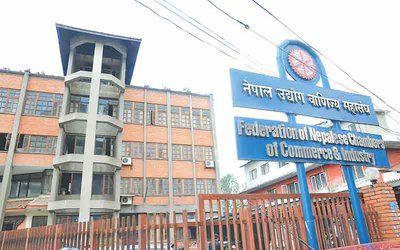
At a time when the government has announced the goal to achieve 7 percent economic growth next year by increasing the investment in infrastructure and agriculture, NRB’s recently released Monetary Policy has shown little signs it will address the current cash crunch.
Bankers and economists have been saying that the banking sector will be unable to invest money in the infrastructure sector given the current level of savings. As the flow of remittances continues to decline and capital expenditure is yet to increase, there is little hope for the deposit to jump in banks.
As the flow of deposit in the commercial bank is declining, banks are announcing new lucrative interest rates to lure the money. However, the flow of deposits is yet to improve.
“The monetary policy has prioritized agriculture, tourism, energy, small and cottage industries and liquidity management,” said NRB governor Dr. Chiranjibi Nepal. "Nepal's balance of payment is satisfactory, financial imbalance is decreasing and there is a positive change in economy.”
Given the current cash crunch, Nepal Rastra Bank's decision to raise lending requirement for commercial banks toward productive sectors by 5 percentage points to 25 percent of their total lending is impossible to achieve.
By increasing the productive sector lending requirement, the central bank has disseminated a message that it wants the banking industry to channelize more resources into priority sectors like agriculture, energy, tourism and small and medium enterprises, which are the major sectors of economic activities, to support the economic growth target of the government.
"It has provided guidance to the financial sector, but lacks optimism that remarkable assistance would be made to capital flow for boosting the economic growth," said Chairman of Nepal Bankers' Association, Anil Keshari Sah.
He, however, took positively the provision of some works of central bank to be available from all seven provinces in view of the federal set up. It has, as he said, ended the compulsion for the private banks to come to the central bank for any work.
Commercial banks were earlier required to float 20 percent of their total lending in productive sectors, including 15 percent credits on agriculture and energy sector combined.
"As banks are failing to meet the existing requirements, there are doubts that banks will channelize additional resources in the productive sector," said Deependra Bahadur Kshetry, a former NRB Governor.
Similarly, the central bank has also increased the size of refinance fund so that priority sectors can borrow money from BFIs at a cheaper or subsidized rate. The size of refinance fund has increased to Rs 20 billion from Rs 10.84 billion in the current fiscal year.
In the current fiscal year, the central bank has run out of cash stock at the refinance fund as more businesspersons have lined up for cheaper funds in the wake of skyrocketing interest rates and shortage of lendable fund in the BFIs.
Private sector leaders had demanded that the central bank increase refinance fund to at least Rs 100 billion. The NRB has scrapped the requirement to lend 2 percentage points of 5 percent lending to the deprived sector directly by themselves.
Such requirement, which was introduced in the monetary policy for the current fiscal year, had drawn stiff criticism from bankers who argue that they do not have structure and expertise to lend to deprived sector on their own.
Now, they will have flexibility of channelizing such lending through microfinance development banks.
Similarly, the NRB has also allowed commercial banks a deadline of mid-October to bring their core-capital-cum-deposit (CCD) ratio requirement to the regulatory limit of 80 percent. While the NRB allowed the regulatory relief on calculation of the CCD ratio by deducting 50 percent of productive sector loans to expire, the flexibility of the deadline to bring the CCD ratio to regulatory limits means that BFIs would not be penalized for breaching such prudential lending limits until mid-October.
However, Federation of Nepalese Chamber of Commerce and Industry (FNCCI) has welcomed the monetary policy presented by Nepal Rastra Bank (NRB) for Fiscal Year 2017/18 as very positive for the private sector.
Issuing a press statement, the Federation has appreciated the provision by which commercial bank has to invest 25 percent of total deposit on productive sector.
"The private sector can benefit from the decision. Likewise, the decision by NRB to allow banks and financial institutions (BFIs) to provide loans of up to 65 percent of total valuation on the purchase of automobiles will also give much needed relief for the private sector," the statement reads.
Similarly, tourism entrepreneurs have welcomed the new monetary policy introduced by Nepal Rastra Bank (NRB) for it allows hotels to exchange foreign currencies with their guests.
In the monetary policy for Fiscal Year 2017/18, NRB said it would permit hotels to exchange foreign currencies up to US$ 300 in value. According to the policy, only hotels who have received NRB-issued licenses can exchange foreign currencies for their clients.
"This is a positive step toward providing currency exchange facility to our guests. We welcome it, "said Binayak Shah, General Secretary of Hotel Association Nepal (HAN),
The Monetary Policy aims to contain inflation at 7 percent, targets 20% of private sector credit growth and 27.8% domestic credit growth. For BFIs to get Rs 10 million interest-free loans for a year for each 2,500 accounts opened, it is difficult to predict the future of the policy.
- IME GROUP: Expands Into Paper Industry
- Mar 24, 2025
- CPN UML: Instigated By India
- Mar 23, 2025
- ADB’S CHIEF ECONOMIST: Nepal Reduces Poverty
- Mar 11, 2025
- FM DR. DEUBA: A Successful Visit
- Mar 11, 2025
- MD GHISING: Target Of Personal Grudge
- Mar 09, 2025














